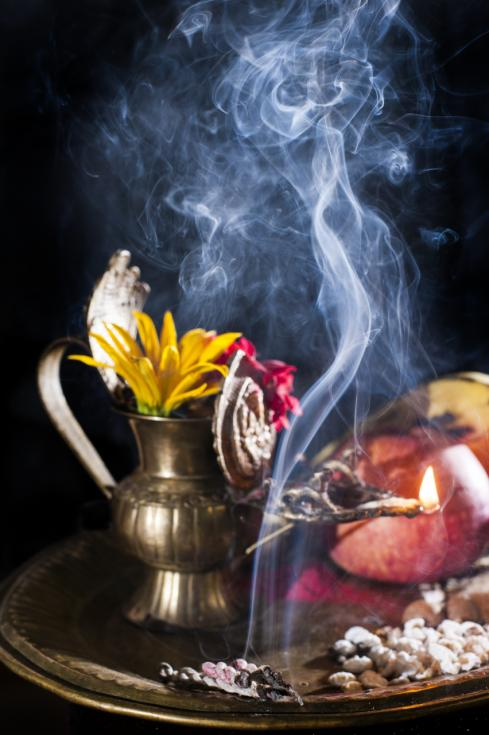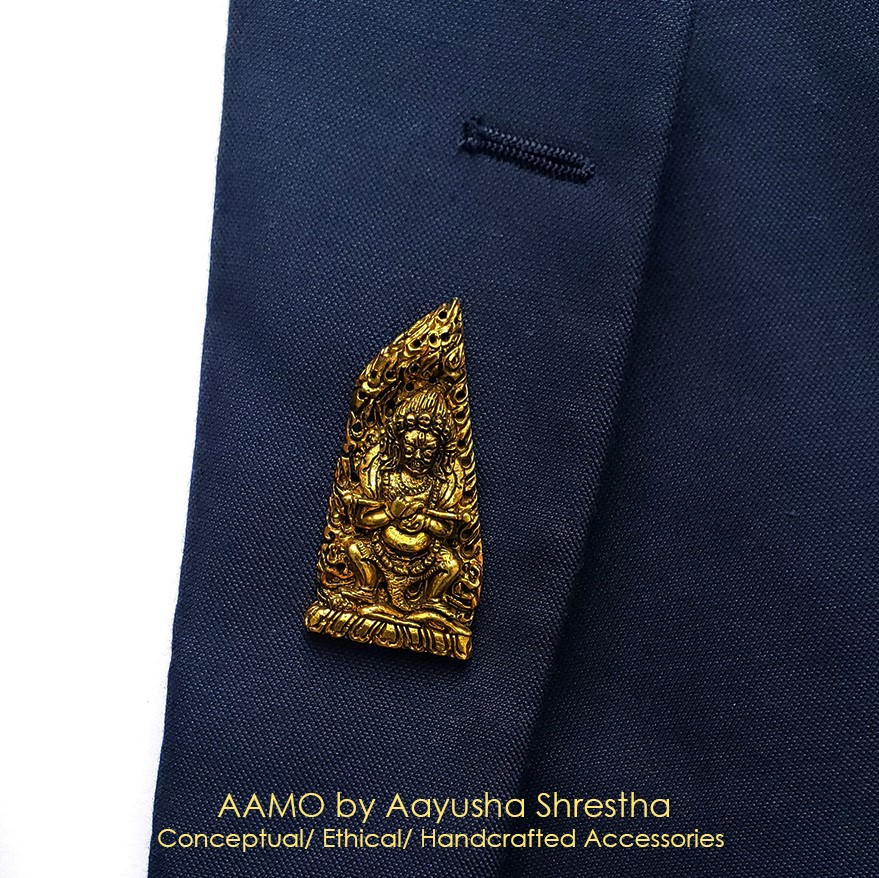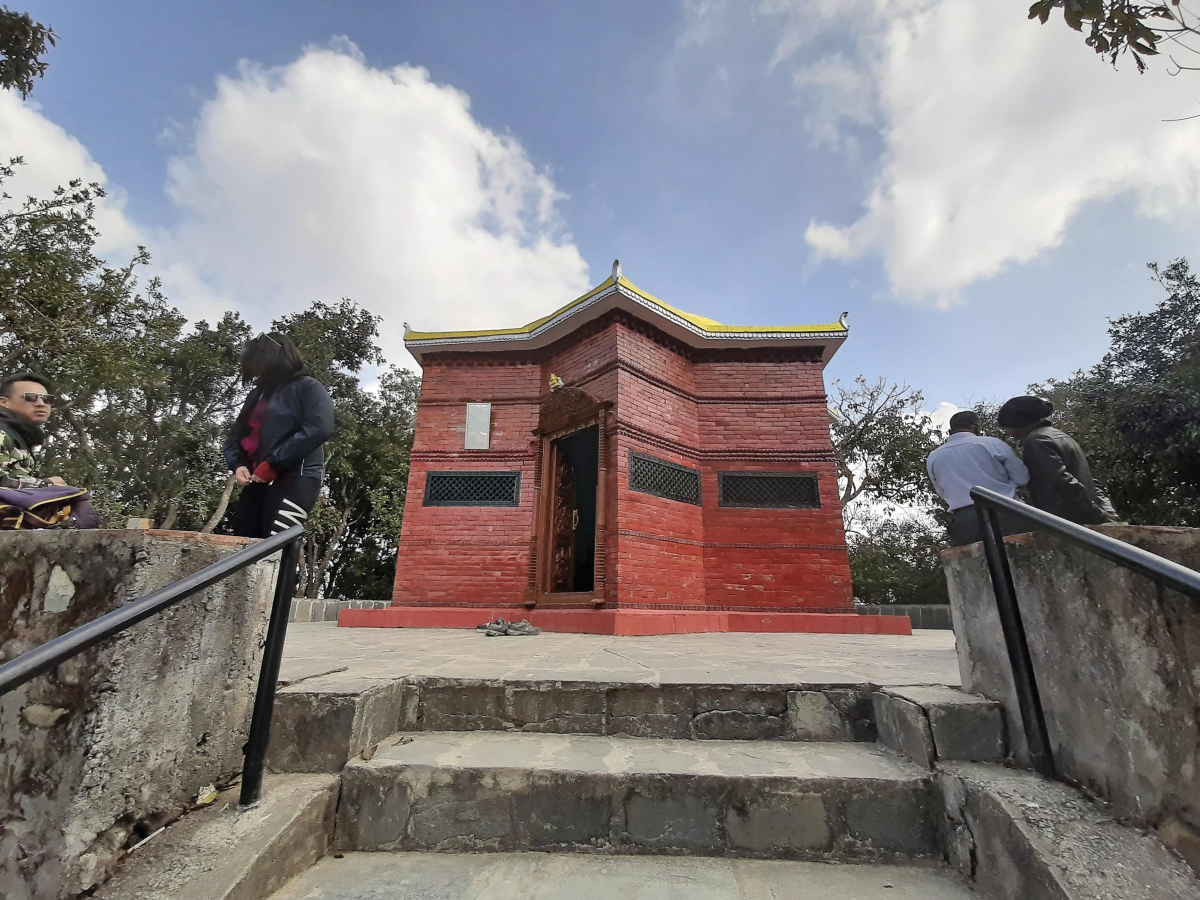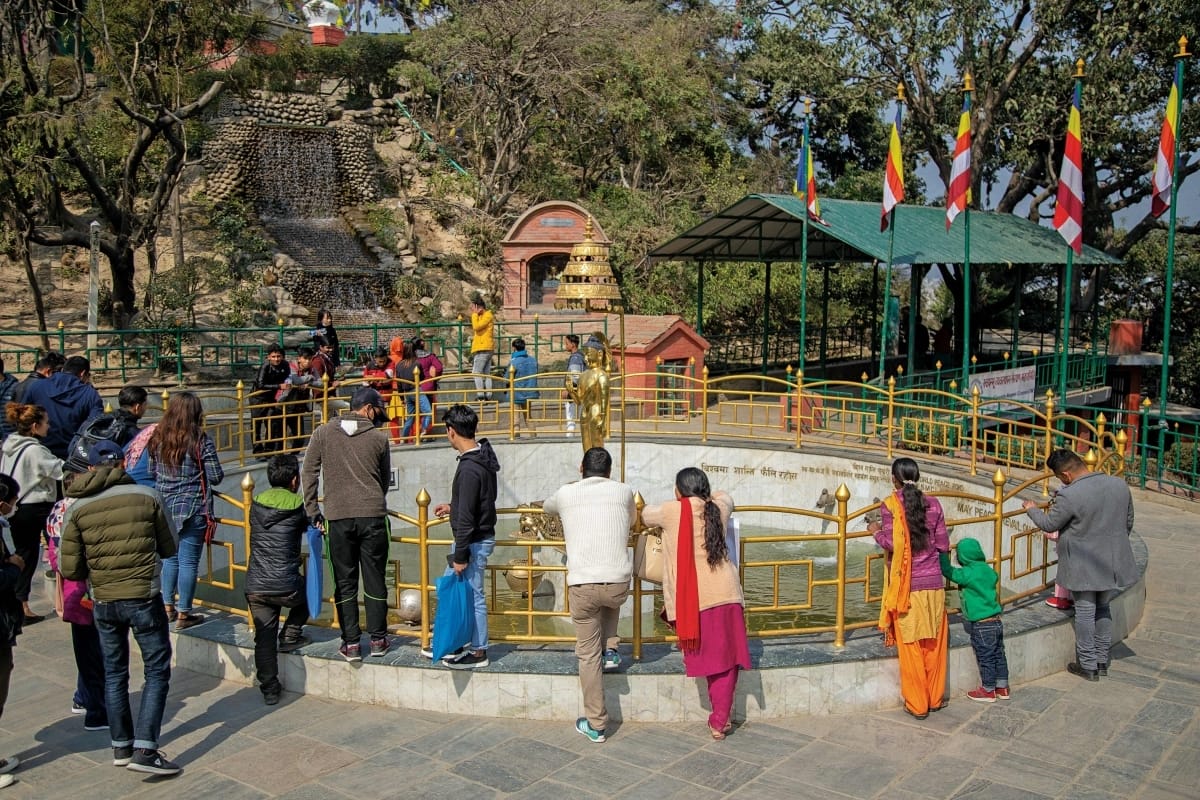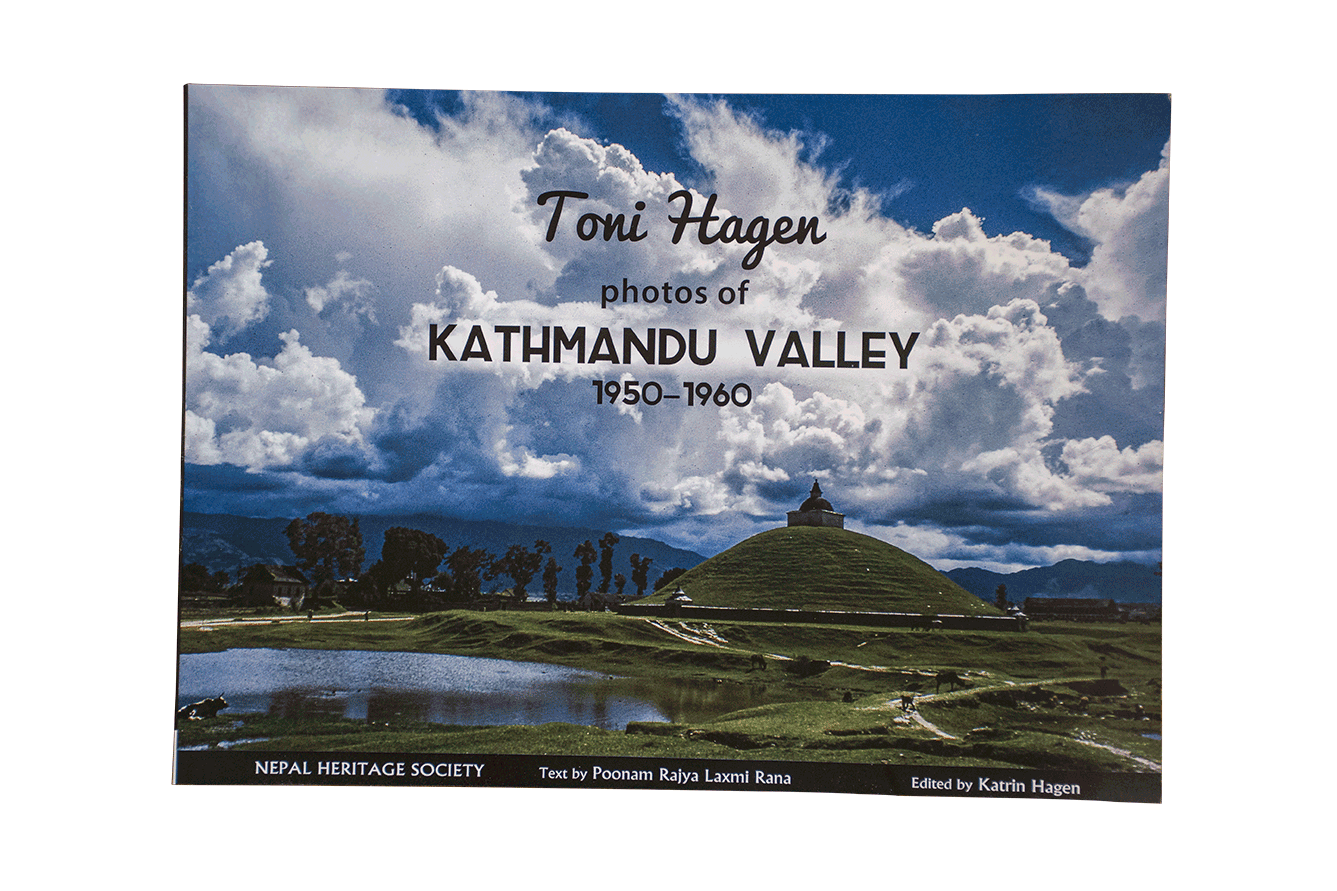The Ram temple in Bardia National Park adds a touch of mystique to the legend of the Tharubaba
A young boy, no more than seven years, works his way around a small temple in Bardia National Park. He sweeps between the large pillars of the Rajisthani style Ram Temple, far removed from the desert, but in the pre-monsoon season, not so far from its heat. He moves with repetition, confident of his work, repeated too many times to count. A tap fills pales of water, and he commences to strew it left and right, washing walls and paths around the temple’s inner sanctum—before proceeding inside.
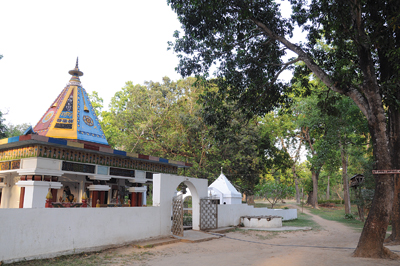 Bells hang from the roof, near the door; small, medium and large. Worn beyond identity some ring-out the auspicious Aum and some just clung. The boy moves through the door into the dimly lit room. He begins washing the four-foot statue of Thakurbaba, the local Tharu peoples name for Lord Vishnu, also another incarnation of his is Lord Rama. The statue has a deep, near black hue, aged beyond centuries. Next he moves onto a statue of Lord Hannuman, the monkey formed deity who represents unquestionable devotion through his love for Ram and his wife Sita; the boy repeats his task.
Bells hang from the roof, near the door; small, medium and large. Worn beyond identity some ring-out the auspicious Aum and some just clung. The boy moves through the door into the dimly lit room. He begins washing the four-foot statue of Thakurbaba, the local Tharu peoples name for Lord Vishnu, also another incarnation of his is Lord Rama. The statue has a deep, near black hue, aged beyond centuries. Next he moves onto a statue of Lord Hannuman, the monkey formed deity who represents unquestionable devotion through his love for Ram and his wife Sita; the boy repeats his task.
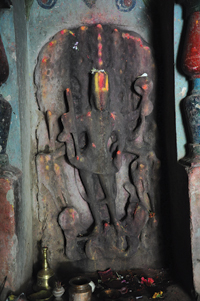 His job done, he moves outside to complete more tasks. In the yard around the temple’s perimeter wall is a duni or religious fire, long decommissioned. Nowadays it is used only during Dashain festivities He moves onto a small white temple to Bolinath (Shiva), proceeding to wash the lingam (phallus) inside.
His job done, he moves outside to complete more tasks. In the yard around the temple’s perimeter wall is a duni or religious fire, long decommissioned. Nowadays it is used only during Dashain festivities He moves onto a small white temple to Bolinath (Shiva), proceeding to wash the lingam (phallus) inside.
With few words and no complaints, the boy moves onto his most interesting last task. A pieced together wall of carved stone, only two feet tall and about six across. Pieces of a large statue that fits together, telling a long-lost and unknown story. Only some sections are present, many others have been either lost to time, or uncollected, making the tale incomplete. At the far left side of the wall is a bust of Durga Devi, wife of Lord Shiva in her representation as pure shakti or power. She looks ferocious, wielding a blade above her head, but to strike what; is unknown and lost. The stone shares the same tone as Thakurbaba.
The burning glare
A small matchbox size Durga/Parvati Temple on an adjacent hill doesn’t get the boys attention today. I ask where the pujari (temple priest) is, “My grandfather is away,” he answers, with an indefinite return. His grandmother watches from a hut between the two temples. She wears tulsi beads (basilica seeds used for meditation by those who abstain from meat and alcohol) and an untrusting glare. She is slowly reluctant to share any of the temple’s stories with me. Strangely though, she offers me the kind gesture of staying for dinner, informing me that her husband is the pujari, and he’s a Sitaram baba.
The next day I come to learn the story of how Thakurbaba and the stonewall came to be through locals.
Have I got a story for you
One tourist guide comes visiting the temple with a French couple; he gives his knowledge freely, even too much so. He tells of a jhankari or shaman, who was walking through the park more than 150 years ago. He was on the road to holy Mt. Kailash in southern Tibet, home to Lord Shiva and his wife. These were the days long before immigration officers. Strapped to his back was the large statue of Thakurbaba. He decided to rest next to the park and one of its streams for a day or two. But on the morning he was to continue to Kailash, no force could get the statue back onto his back and moving again. He believed he was meant to keep the statue where it was, and so it remained.
I sat looking at the man, but found his story a little too strange to understand, especially considering the size of Thakurbaba and its sheer weight. And also, how did the wall, with Durga’s image come to be?
Unsatisfied I continued investigating.
Digging around
People filled me with plenty of random knowledge. Most couldn’t tell me how old Thakurbaba was, or where he came from. Most people also dismissed the previous story. They were happy to tell how many years ago the temple owned a large area of land, 12 bigha, and more than 100 cattle. Which anywhere, to anyone, is a vast wealth. But time, depths and tigers took care of all that. Some talked, saddened, how arti puja, the worship of the rising and setting sun was no longer observed, how the duni lay empty and how little ever happened at the temple. But still, nobody could tell me about the wall and statue.
Still unhappy with the answers I had, I was near ready to give up on finding out the tale during my journey into western Nepal’s Tarai flatlands, until, an eventful meeting on my last night. A man with a deep interest in local lore and Hinduism, had heard of my inquiries and wished to share his version of events.
He told me how many centuries ago a farmer was digging down by the river, when he hit upon a lump of rock. So the man dug further around the lump, eventually and to his surprise uncovering a statue. Not knowing what to do, the man ran to the great king (more likely the local chief) who upon hearing about the find, demanded the statue to be dug up and brought to his home. The next day many workers starting digging to bring out the statue for the king, but to no avail. Waters mysteriously rose around both workers and statue. Then the pond became infested with snakes. That night, at a loss of ideas, the king retired for restless sleep.
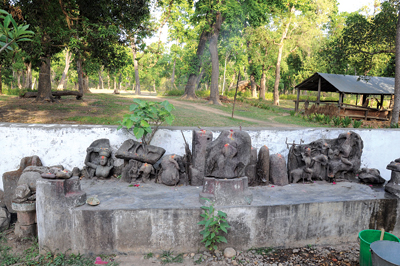 And So It Was
And So It Was
In a deep sleep, the king dreamed that the statue was talking to him. It tells him not to remove the statue from its place or there will be grave consequences for him. In the morning, shaken, the king called for the digging to cease and ordered a temple built on the site for the statue to remain with the Tharu people. And as for the wall of carvings, this turned up in or near the river, piece by piece in the years since, mostly after large rainfall or when fields were ploughed.
I don’t know if the tale is a true account, but for me it was more believable than the statue being carried from India. Personally I always enjoy a bit of the mysterious or unexplainable. But it doesn’t matter, for like most things of this nature, it is all a matter of faith and belief. If you are in the area, go check and ask around for yourself, maybe you can uncover the truth, or even a missing piece of the wall and its puzzle.


